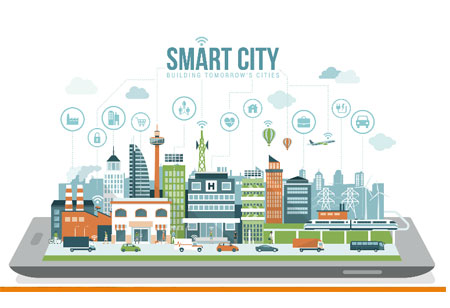THANK YOU FOR SUBSCRIBING
Be first to read the latest tech news, Industry Leader's Insights, and CIO interviews of medium and large enterprises exclusively from Gov CIO Outlook
THANK YOU FOR SUBSCRIBING

By
Government CIO Outlook | Monday, November 19, 2018
Stay ahead of the industry with exclusive feature stories on the top companies, expert insights and the latest news delivered straight to your inbox. Subscribe today.
It is anticipated that about 75 billion sensors and devices (IoT) will be connected to the internet globally by 2020 and are predicted to generate up to 20 zettabytes of data by 2025. Due to this worldwide connectivity, mushrooming of smart cities and schools has occurred. The goal of smart schools and cities is to improve the quality and functionality. Researchers, designers, and tech companies are highly concerned with the development of smart cities and schools. These smart cities and schools are interconnected with big data, sensor networks, computational programmable processes, and software supported functionalities.
Earlier, smart cities were much focused on metropolitan cities like New York, London, Paris, and San Francisco. This resulted in a big backlash and caused a lot of inequality. Nowadays, smart cities and schools are a buzzword. Debra Lam, Managing Director of Smart Cities and Inclusive innovation for Georgia Tech, states that smart city is the integration and application of automation and data for increasing the quality of life. According to this statement, every city and community can be smart, which even includes the Georgia Tech campus. But this has gone beyond the working within Atlanta city. Georgia Tech offers an exciting solution for other communities to come together to partner with the academia. Georgia Tech started statewide program Georgia, Smart “Communities Challenge” that initiates the industries and top schools to come together to overcome the problem it was facing. In South Georgia, Albany is working on automated housing industry that encourages safe and sustainable inventory of houses for the city.
The key takeaway is that there will be an opportunity, no matter the size. Many cities are performing pilot projects not only in autonomous vehicles but also in city services—for monitoring and sensor controls. Building a smart city and school needs careful planning and collaboration with many stakeholders, even the public should also be involved. There should be a specific purpose behind framing each technology and program and to be linked back to the specific goals. As smart cities are a phenomenon, there will be many challenges and missteps.
Check Out This: Paperscorer
I agree We use cookies on this website to enhance your user experience. By clicking any link on this page you are giving your consent for us to set cookies. More info

However, if you would like to share the information in this article, you may use the link below:
www.govciooutlookapac.com/news/framework-for-smart-learning-from-smart-city-perspective-nid-296.html



